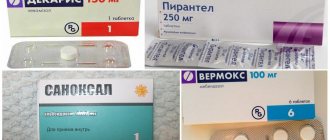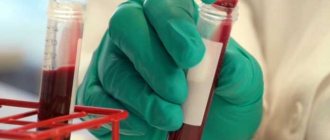Author's rating
Author of the article
Green Elena Stanislavovna
Otolaryngologist of the second category
Articles written
665
about the author
Cough is a symptom that every person faces. Mostly, it is a sign of an infectious disease and goes away after proper medical treatment. But coughing up blood makes the patient worried, especially when such a symptom is accompanied by concomitant symptoms with a deterioration in overall health.
Causes of hemoptysis
Coughing up blood always indicates the onset of a serious illness. You should not hope that such a symptom will disappear on its own without adequate treatment. The safest source of impurities in sputum is considered to be the rupture of a small vessel in the bronchi. Injury can occur after a diagnostic examination in a hospital with the use of invasive devices (endoscope), excessive physical stress, or prolonged use of anticoagulants.
Common diseases characterized by coughing up blood:
- fungal, parasitic infection in the lungs (uncharacteristic discharge in the mucus occurs due to tissue damage by roundworms and other pathogenic microorganisms);
- traumatic injury (brown “rusty” sputum is considered one of the manifestations of a chemical, thermal burn, strong pressure or blow to the sternum);
- pneumonia (the acute phase of pneumonia is accompanied by high fever and discharge with scarlet patches);
- bronchitis (a distinctive feature of this disease is a prolonged, unproductive dry cough that causes damage to the mucous membrane);
- oncological pathologies (the most terrible diagnosis that a patient can hear after diagnosis is lung cancer).
Pathological conditions such as abscess, heart attack and lung adenoma can be included in a separate group. Diseases are easily identified by the unpleasant odor of sputum.
It is important to be able to recognize the manifestations of such a dangerous disease as tuberculosis. In addition to coughing up blood, the patient complains of constant temperature, poor appetite, sweating, and unmotivated weakness.
The appearance of such symptoms should be a reason to visit a therapist, pulmonologist or infectious disease specialist.
Symptoms of pathology development
Often symptoms help determine the diagnosis in the early stages of manifestation. The clinical picture of occurrence in all cases is usually the same: fatigue; constant weakness; dyspnea; dry cough, turning into cough with sputum; increased body temperature; pain in the thoracic and cervical regions; increased sweating; a sharp, unpleasant odor or taste that occurs in the mouth; weight loss; complete or partial loss of appetite; attacks of suffocation; lack of normal immunity; increase in colds; nausea followed by vomiting; the appearance of pus during coughing and vomiting; tachycardia; red-colored sputum; change in voice timbre; a sore throat; burning sensation in the chest.
Nonspecific sources of coughing up blood
Many people think that the appearance of hemoptysis is the first sign of diseases of the respiratory system. Indeed, such a symptom most often indicates an inflammatory process in the bronchi and lungs. At the same time, we cannot exclude the possibility that brown sputum appeared for other reasons not related to breathing.
Coughing up blood – what could it be:
- abnormalities of the cardiovascular system (foamy discharge may indicate an aortic aneurysm, a blocked artery, or swelling in the area of the heart);
- blood diseases (severe pathologies such as leukemia, thrombocytopenia are often accompanied by hemoptysis);
- endometriosis (blood in the expectorated sputum of the fairer sex during menstruation should be the reason for a comprehensive diagnosis of the germination of endometrial tissue into the lungs);
- rare diseases (systemic lupus erythematosus, Goodpasture's syndrome or Wegener's granulomatosis).
It’s a good idea to make sure that when you cough, the blood actually comes from the lungs, the bronchi. Sometimes impurities appear due to banal bleeding of the gums, a cut of the tongue, or cheeks.
Why does blood appear in sputum in the morning?
With long-term disruption of the functioning of the lungs, which is associated with the presence of a cancerous tumor, pneumonia, advanced tuberculosis, expectoration with ichor is observed after sleep. In diseases of the throat, nasopharynx, and inflammation of the tonsils, a small amount of thick, dark-colored blood is released with pus.
If a person suffers from hemorrhagic diathesis, in the morning he expectors with sputum, which contains red streaks.
How is the diagnosis carried out?
At the first consultation, the doctor will certainly perform an examination of the respiratory tract, listen to the chest, and collect an anamnesis. It is important not to withhold any information from the specialist. Sometimes insignificant, in the patient’s opinion, data helps to accurately determine the cause of the disease.
Coughing up blood is a dangerous symptom that requires additional laboratory and instrumental tests. To exclude rapidly progressing colds, tuberculosis, pneumonia, it is necessary to donate blood, urine for analysis, and sputum for bacteriological culture. The initial diagnosis can be clarified using radiography, bronchoscopy, and computed tomography. Under certain conditions, the doctor prescribes an unpleasant but necessary biopsy. This procedure allows you to confirm or refute lung cancer.
If during examination and other medical procedures no pathologies of the respiratory system are detected, then the patient is redirected to specialized specialists. Consultation with an endocrinologist, gynecologist, phthisiatrician, cardiologist or gastroenterologist is necessary.
Worm infestation
If an adult or child has helminths in the body, there is a possibility of blood in the sputum. A significant number of helminths can be found and develop in all human organs. Often, hemoptysis occurs with the following parasitic diseases: hookworm, paragonimiasis, ascariasis, echinococcosis, strongyloidiasis.
Helminths can be found in the intestinal lumen and, under certain conditions, can pass through the lungs, injuring them. Roundworms enter the body through contact and fecal-oral routes. A parasitic infection causes a dry cough, nausea, headache, wheezing in the lungs, vomiting and abdominal pain. Often the cough occurs in the morning.
Treatment of diseases that cause coughing up blood
Therapeutic procedures are prescribed after a thorough comprehensive examination. Medicines, traditional medicine, and manual treatments must be approved by a doctor. It is important to exclude possible contraindications and avoid side effects of pharmacotherapy.
General principles of treatment of colds, viral, infectious lesions of the respiratory system:
- mandatory bed rest:
- strict compliance with all doctor’s recommendations;
- dosed intake of prescribed medications;
- physiotherapeutic procedures;
- proper balanced nutrition;
- support of water-salt balance.
Coughing up blood usually indicates dangerous illnesses, so in most cases treatment is carried out in a hospital hospital. If necessary (severe bleeding when coughing), blood transfusions and daily drainage are performed.
Surgical treatment is used to diagnose oncology, abscess, pulmonary embolism, and bronchiectasis.
You need to understand that tuberculosis, pneumonia, and bronchitis can cause serious complications (including disability). Self-medication when blood appears in the sputum (cough) is strictly prohibited.
Diagnostic procedures
The diagnosis is made after examining the patient, considering his complaints, listening to breathing and based on the results of special studies and tests. In the standard course of inflammation, patients are prescribed a chest x-ray. To determine which bacteria or virus caused the inflammation, patients must undergo the following studies and tests:
Sputum culture
- general detailed blood test confirming the degree of pulmonary inflammation;
- urine analysis also demonstrates the progress of inflammation and the general state of damage to the body;
- sputum culture specifies the type of pneumonia causative agent;
- X-ray, which is mandatory for all patients with pneumonia, is a clarifying method for studying pathological abnormalities in the lungs;
- during the treatment process, a procedure such as bronchoscopy is repeatedly performed to clarify the state of inflammation;
- if the results of bronchoscopy do not show a complete picture of the pathological condition of the lungs and bronchi, the doctor recommends undergoing bronchography.
A diagnostic examination helps doctors prescribe and, if necessary, adjust the treatment regimen and select the necessary medications and treatment methods in the shortest possible time.
Recovery period and prevention
After treatment of inflammatory processes affecting the respiratory system, a long time for rehabilitation will be required. It is believed that residual cough can bother a person for another 4-6 weeks. During this period, you must follow all doctor's recommendations and lead a healthy lifestyle. Preventive action with natural medicines will not be superfluous. For example, St. John's wort, oregano, linden, coltsfoot, and yarrow have expectorant properties. These plants can also be used to prepare light immunity products.
It is not difficult to avoid relapses of diseases that cause blood in the cough by giving up bad habits (especially smoking), increasing physical activity (hiking in the fresh air, swimming, yoga), strengthening the immune system (hardening). Annual fluorography and sanatorium-resort treatment will not be superfluous.
Accompanying therapy
Hemoptysis with pneumonia is a threatening symptom, signaling a serious pathological malfunction in the respiratory system. The symptom itself requires serious and long-term treatment, just like the inflammatory pathology itself. Basic treatment for this type of inflammatory pathology is not enough; it is important to follow a number of principles of accompanying therapy.
Diet therapy
The body of a person suffering from pneumonia is greatly weakened by the toxic effects of pneumococcal agents and a febrile state. Potent antimicrobial drugs aimed at stopping the acute progression of pathological inflammation in the lung tissue also do not benefit the gastrointestinal tract and immune system. Negative changes in the body of a sick person can be corrected using a certain nutritional system.
- The nutritional plan should be designed taking into account the need for frequent consumption of small portions of food. It is believed that the best option would be six to seven meals a day with small amounts of soft, warm food. In the first acute days of progression of the inflammatory process, you can limit the patient’s diet to warm broths, vegetable purees, and liquid porridges.
- In the following days of illness, you should definitely introduce fermented milk products and protein foods into the menu. Due to this, it is possible to solve the issue of the necessary increased caloric intake of the patient’s diet.
- Against the background of a significant restriction in the consumption of carbohydrates and fats, it is imperative to increase and diversify the patient’s fruit and vegetable diet, including through freshly squeezed juices. Only cauliflower and white cabbage, radishes, and legumes should be excluded.
We should also not forget that hemoptysis that accompanies the inflammatory process can significantly reduce hemoglobin levels, without provoking full-blown anemia, the following must be added to the diet of patients with symptoms of hemoptysis:
- boiled chicken or beef liver;
- boiled or steamed lean meats;
- fruit juices: pomegranate, apple, orange;
- vegetable juices: beetroot, carrot;
- buckwheat porridge.
It is not recommended for patients to give hard-to-digest, heavy foods, fried, spicy and smoked foods.
Therapy with folk remedies
Traditional therapies can provide an effective additional effect if they are agreed upon with the attending physician. In the acute period of progression of inflammatory pulmonary disease, accompanied by hemoptysis, the patient can be given herbal medicinal herbs, infusions and decoctions from them.
- Juice is squeezed out of fresh yarrow grass. Give it to the patient to drink a tablespoon every half hour until the symptoms of acute pulmonary hemorrhage stop.
- If it is not possible to use freshly prepared plant juice for treatment, you can use dried yarrow herb, brewed at the rate of a couple of tablespoons per half liter of boiling water. This infusion is given to the patient to drink half a glass every half hour.
- An infusion of chicory herb is also considered effective for pulmonary hemorrhages. It is prepared at the rate of a tablespoon of dry raw material per one and a half cups of boiling water, simmer over low heat for a quarter of an hour. The patient is given a third of a glass to drink chilled every half hour.
Hemoptysis with pneumonia is a serious symptom that requires timely and emergency response. We should not forget that therapy with folk remedies cannot replace the patient with a full-fledged medicinal effect on the foci of inflammation.
Types of pulmonary hemorrhage
Since 1990, domestic specialists have used the classification of pulmonary hemorrhage into three degrees:
- First, A, B and C - successively from 50 to 500 ml of daily blood loss;
- Second, A and B - from 30 ml to 500 ml in an hour;
- Third degree, A and B - simultaneous outpouring of up to 100 ml of blood or more.
Tactics for different intensities of blood loss differ, and if the patient’s hemoptysis does not frighten the oncologist, although he makes adjustments to therapy, then bleeding from the lung requires urgent medical and resuscitation care.











